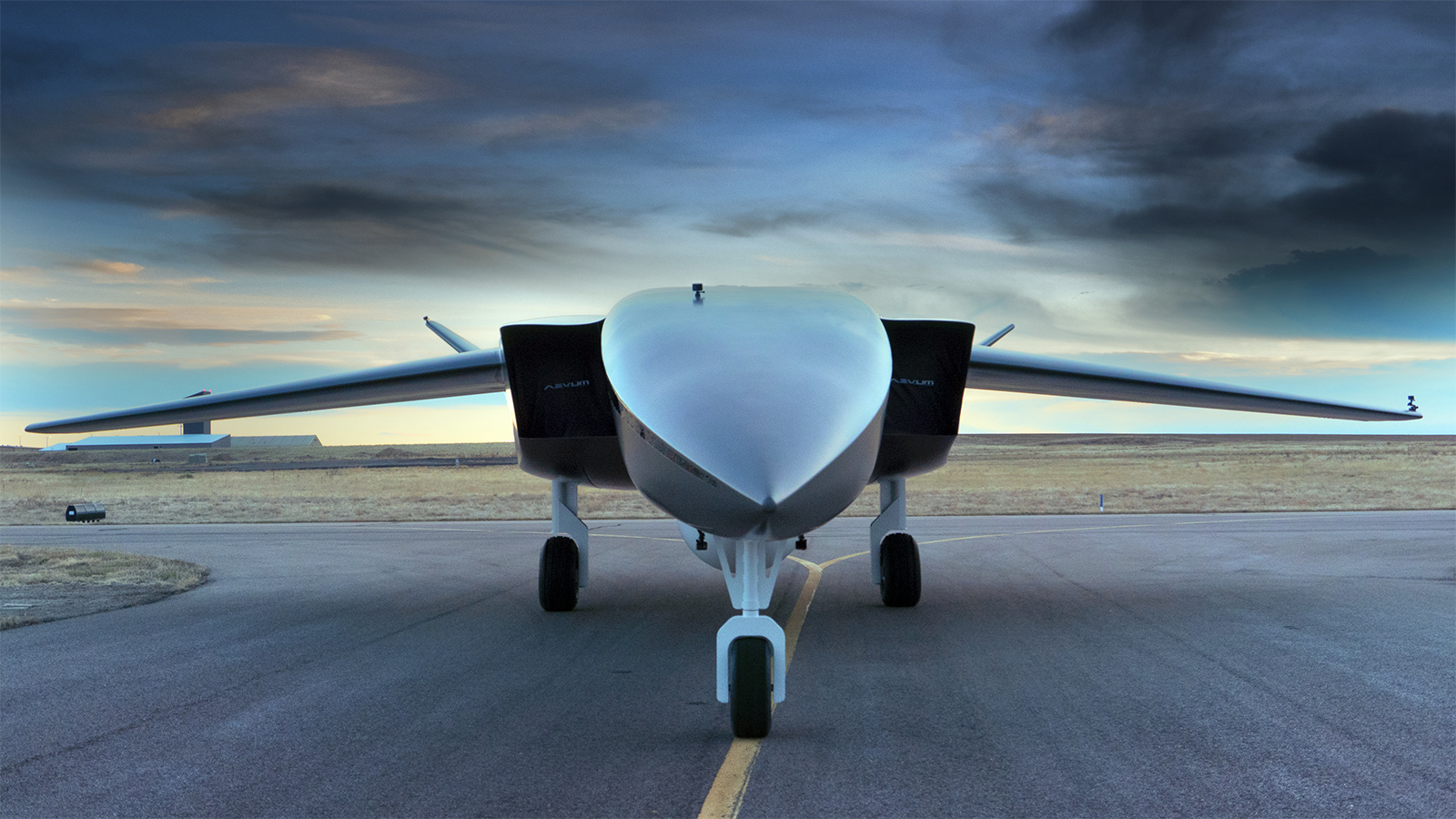Stay Up to Date
Submit your email address to receive the latest industry and Aerospace America news.
First launch with Ravn X scheduled for 2021
Every space launch company has its own secret sauce it believes will set it apart from competitors. For Aevum Inc. that special something is an autonomous, unpiloted, rocket-launching aircraft.
The 4-year-old Alabama startup today unveiled this jet-powered reusable carrier drone during a webcast. It will be paired with the launch vehicles the company is also developing to form Ravn X, a launch system for satellite payloads of up to 500 kilograms, depending on the orbital altitude.
With its sleek black and white fuselage and tapered nose, the 24-meter drone more closely resembles the design of a supersonic airliner than the non-supersonic carrier aircraft that rivals including Northrop Grumman and Virgin Orbit fly to air launch their rockets.
That resemblance is intentional, Aevum founder and CEO Jay Skylus told me in an interview before the unveiling. The aircraft revealed today would be a precursor to a variant that would fly at supersonic speeds.
This, the company said, would give it an edge over its air-launch rivals as well as companies that launch conventional rockets from the ground. “Our model is fundamentally different and really, I believe, built to be sustainable as opposed to our peers and industry that are dependent on this launch-site infrastructure,” Skylus said.
Ravn X, which has yet to fly, could take off from any of the 11 FAA-licensed spaceports in the U.S. In the first operational flight scheduled for mid-2021, the carrier drone will speed down a runway at the Cecil Spaceport in Jacksonville, Florida, with its two-stage rocket strapped to its belly. Inside will be an undisclosed number of three-unit and larger cubesats for the U.S. Space Force. The $4.9 million experimental mission is dubbed ASLON-45, short for Agile Small Launch Operational Normalizer, and is part of a Pentagon plan to build up the small-launch industry to more cheaply launch small satellites to low-Earth orbit.
Once aloft, software will command the rocket to be released at an altitude between 9 and 18 kilometers, and the drone’s flight computer will direct the drone either back to Jacksonville or another destination calculated by an algorithm, based on data including air speed and weather conditions from the onboard suite of sensors.
Aevum expects this flexibility of launch and landing sites to be especially attractive to military customers. “This makes it almost impossible to predict where Ravn X is going to take off from” and land, Skylus said. “So our adversaries who are targeting launch sites to keep us on the ground, this will be nearly impossible for them for intercept because we can literally change each launch site within the hour.”
Leading up to the Jacksonville launch, Aevum must verify the Ravn X hardware and software by conducting a series of taxi and flight tests, the goal being to earn an airworthiness certificate from FAA. Ravn X could then potentially fly from any U.S. airfield with a 1.6-kilometer (5,280-foot) runway the drone needs for takeoff. That certificate is not a requirement for the U.S. Space Force launch, for which Aevum must procure an FAA launch and reentry license.
Ravn X can launch up to 100 kilograms to a 500-kilometer sun synchronous orbit, and up to 500 kilograms to lower altitudes. The supersonic variant of the carrier plane, Ravn without the X, could launch 300 kilograms to sun-synchronous orbits.
Skylus expects to need two or three of each variant at every U.S. spaceport for the “substantial amount of commercial customers as well as defense” launches lined up over the next few years that the company has not announced publicly.
“Our other customers include research labs that are tackling climate change or folks that are trying to optimize crop yields, big logistics companies that are trying to track their assets across oceans,” Skylus said. “So these are all end-user applications, and there’s a customer behind it that needs our logistics services to get their sensors deployed in orbit.”
About cat hofacker
Cat helps guide our coverage and keeps production of the print magazine on schedule. She became associate editor in 2021 after two years as our staff reporter. Cat joined us in 2019 after covering the 2018 congressional midterm elections as an intern for USA Today.
Stay Up to Date
Submit your email address to receive the latest industry and Aerospace America news.




